
|
Now it is 7.7 mag (June 28, Marco Goiato). It was expected to brighten up to 6-7 mag from April to July. But it is fainter than predicted recently. In the Northern Hemisphere, it will be getting lower after this, and it will be unobservable in August. In the Southern Hemisphere, it is observable in good condition after this.
Date(TT) R.A. (2000) Decl. Delta r Elong. m1 Best Time(A, h)
June 24 14 15.97 -2 29.8 0.885 1.644 119 6.9 20:05 (180, 58)
July 1 14 13.13 -9 26.1 0.945 1.656 115 7.1 19:35 (180, 65)
|
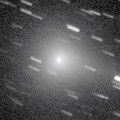
|
Outburst occured on Apr. 4, and it brightened by 2 mag, up to 6.2 mag (Apr. 7, Juan Jose Gonzalez). It is very bright as 8.9 mag still now (June 24, Marco Goiato). It stays observable for a long time after this. But it locates low in the Northern Hemisphere. A fragment of 15 mag was detected in mid June.
Date(TT) R.A. (2000) Decl. Delta r Elong. m1 Best Time(A, h)
June 24 2 9.19 17 58.5 1.524 1.280 56 8.5 5:37 (219, 27)
July 1 2 27.15 19 16.6 1.562 1.348 58 8.8 5:38 (216, 27)
|
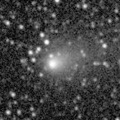
|
Now it is bright as 10.3 mag (June 28, Marco Goiato). It is observable in excellent condition in the Southern Hemisphere. It locates low in the Northern Hemisphere.
Date(TT) R.A. (2000) Decl. Delta r Elong. m1 Best Time(A, h)
June 24 16 27.71 -32 26.0 0.605 1.587 155 10.3 22:17 (180, 88)
July 1 16 28.23 -33 43.3 0.625 1.586 149 10.3 21:50 (180, 89)
|

|
It has not been observed yet in this apparition. The condition of this apparition is worst. It must have brightened up to 10 mag in spring, but it is not observable at all.
Date(TT) R.A. (2000) Decl. Delta r Elong. m1 Best Time(A, h)
June 24 6 35.55 16 7.4 2.365 1.372 9 12.3 18:27 (103, -9)
July 1 6 58.87 15 17.1 2.423 1.428 9 12.7 18:29 (102,-10)
|
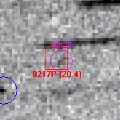
|
Now it is bright as 13.0 mag (June 30, Chris Wyatt). It will brighten rapidly, and it is expected to brighten up to 12 mag from July to September. In the Southern Hemisphere, it stays at the same altitude in the morning sky. In the Northern Hemisphere, it will be getting higher slowly.
Date(TT) R.A. (2000) Decl. Delta r Elong. m1 Best Time(A, h)
June 24 2 19.69 5 27.0 1.462 1.269 58 12.7 5:37 (230, 36)
July 1 2 47.19 6 53.6 1.444 1.251 58 12.5 5:38 (228, 35)
|
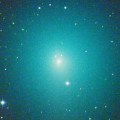
|
It approached to Earth down to 0.14 a.u. from late March to early April, and it brightened up to 6.0 mag (Apr. 7, Juan Jose Gonzalez). Now it is fading. But it is bright as 11.2 mag still now (June 30, Chris Wyatt). It stays observable in good condition after this until the comet fades out.
Date(TT) R.A. (2000) Decl. Delta r Elong. m1 Best Time(A, h)
June 24 18 16.13 0 29.9 0.418 1.408 156 13.0 0:09 (180, 54)
July 1 18 12.75 -3 5.1 0.471 1.466 158 13.8 23:34 (180, 58)
|

|
Now it is bright as 12.4 mag (June 30, Chris Wyatt).
Date(TT) R.A. (2000) Decl. Delta r Elong. m1 Best Time(A, h)
June 24 21 40.83 -13 19.2 5.138 5.836 129 13.3 3:33 (180, 68)
July 1 21 39.35 -13 20.2 5.056 5.835 136 13.3 3:04 (180, 68)
|

|
Now it is 14.6 mag (June 30, Chris Wyatt). It will brighten up to 12-13 mag and will be observable in good condition in summer.
Date(TT) R.A. (2000) Decl. Delta r Elong. m1 Best Time(A, h)
June 24 0 4.18 15 55.7 2.701 2.805 85 13.5 5:37 (186, 39)
July 1 23 55.90 15 45.8 2.534 2.788 93 13.4 5:20 (180, 39)
|

|
In the Southern Hemisphere, it will be getting higher gradually in the morning sky after this. Then it will be observable at 11 mag for a long time from 2017 autumn to 2018 winter. In the Northern Hemisphere, it will appear in the morning sky in August.
Date(TT) R.A. (2000) Decl. Delta r Elong. m1 Best Time(A, h)
June 24 4 26.92 -7 45.4 4.875 4.151 40 13.6 5:37 (265, 21)
July 1 4 33.52 -7 6.8 4.781 4.100 43 13.5 5:38 (261, 25)
|
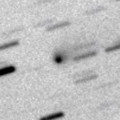
|
Now it is 14.1 mag (June 30, Chris Wyatt). It stays 14 mag from spring to summer. It locates somewhat low in the Northern Hemisphere. The perihelion distance increased from 2.4 a.u. to 2.9 a.u. in this apparition. So it will not be bright as before.
Date(TT) R.A. (2000) Decl. Delta r Elong. m1 Best Time(A, h)
June 24 15 47.70 -21 56.0 2.061 2.966 147 14.0 21:37 (180, 77)
July 1 15 44.92 -22 4.7 2.110 2.960 139 14.1 21:06 (180, 77)
|

|
Now it is 15.6 mag (June 4, T. Ikemura, H. Sato). In the Northern Hemisphere, it will brighten up to 14 mag from summer to winter, and it will be observable in excellent condition. In the Southern Hemisphere, it will be observable in the very low sky only from May to June.
Date(TT) R.A. (2000) Decl. Delta r Elong. m1 Best Time(A, h)
June 24 0 39.94 39 5.4 3.506 3.300 70 14.4 5:37 (191, 15)
July 1 0 41.82 41 50.5 3.408 3.285 74 14.3 5:38 (185, 13)
|
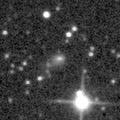
|
Now it is 14.7 mag (June 30, Chris Wyatt). It will be observable at 14 mag for a long time from 2017 to 2018.
Date(TT) R.A. (2000) Decl. Delta r Elong. m1 Best Time(A, h)
June 24 17 42.25 22 11.1 3.518 4.286 133 14.5 23:30 (180, 33)
July 1 17 29.97 22 52.7 3.520 4.256 130 14.5 22:50 (180, 32)
|
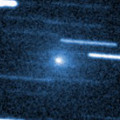
|
It brightened up to 11 mag from March to April. Now it is fading. But it is bright as 12.7 mag still now (May 26, iTelescope Observatory, Siding Spring). In the Southern Hemisphere, it stays observable for a long time, but it stays low. It will be getting higher slowly also in the Northern Hemisphere, but it stays extremely low for a while.
Date(TT) R.A. (2000) Decl. Delta r Elong. m1 Best Time(A, h)
June 24 2 59.98 7 45.9 2.043 1.562 48 15.0 5:37 (237, 27)
July 1 3 14.11 7 59.2 2.080 1.651 51 15.4 5:38 (234, 30)
|

|
Now it is 15.9 mag (June 9, Kunihiro Shima). It is expected to brighten up to 9 mag in summer in 2018. In the Northern Hemisphere, it stays observable until 2018 summer while the comet will be brightening. In the Southern Hemisphere, it is hardly observable in 2017, but it will be observable in good condition in 2018.
Date(TT) R.A. (2000) Decl. Delta r Elong. m1 Best Time(A, h)
June 24 18 9.48 53 35.2 4.512 4.843 102 15.1 0:02 (180, 1)
July 1 17 59.37 52 57.3 4.447 4.786 103 15.0 23:19 (180, 2)
|

|
Now it is 15.6 mag (Mar. 6, Kunihiro Shima). It is appearing in the morning sky in the Southern Hemisphere. It will appear in the morning sky in July in the Northern Hemisphere. Then it stays observable at 15.5 mag unil the end of 2017.
Date(TT) R.A. (2000) Decl. Delta r Elong. m1 Best Time(A, h)
June 24 3 3.34 4 47.3 6.255 5.638 48 15.5 5:37 (240, 29)
July 1 3 8.46 4 50.7 6.199 5.662 54 15.5 5:38 (235, 33)
|

|
Now it is 17.5 mag (June 16, Kunihiro Shima). It will brighten up to 15.5 mag in summer. It will be observable in excellent condition in the Southern Hemisphere. It will be getting higher gradually in the morning sky also in the Northern Hemisphere.
Date(TT) R.A. (2000) Decl. Delta r Elong. m1 Best Time(A, h)
June 24 22 8.41 -37 4.6 1.740 2.495 127 15.7 4:00 ( 0, 88)
July 1 22 7.50 -36 12.1 1.677 2.489 133 15.6 3:32 ( 0, 89)
|

|
Now it is 15.9 mag (June 11, Kunihiro Shima). It is expected to brighten up to 11-12 mag from 2018 to 2019. In the Northern Hemisphere, it stays observable in good condition while the comet will be brightening gradually. In the Southern Hemisphere, it is not observable until 2018 October.
Date(TT) R.A. (2000) Decl. Delta r Elong. m1 Best Time(A, h)
June 24 16 33.68 61 44.2 4.519 4.677 92 15.8 22:21 (180, -7)
July 1 16 17.16 61 40.0 4.503 4.626 90 15.7 21:37 (180, -7)
|

|
Now it is bright as 13.6 mag (June 30, Chris Wyatt). It was expected to brighten up to 12 mag in summer. But actually, it is fainter than expected. It is observable in excellent condition in the Southern Hemisphere. It locates somewhat low in the Northern Hemisphere.
Date(TT) R.A. (2000) Decl. Delta r Elong. m1 Best Time(A, h)
June 24 19 21.56 -32 27.6 1.117 2.107 161 15.9 1:14 (180, 87)
July 1 19 16.21 -32 2.0 1.085 2.090 167 15.8 0:42 (180, 87)
|

|
First return of a new periodic comet discovered in 2000. Now it is 17.8 mag (June 16, Kunihiro Shima). It will brighten rapidly, and it is expected to be observable at 15.5 mag in good condition from July to September.
Date(TT) R.A. (2000) Decl. Delta r Elong. m1 Best Time(A, h)
June 24 0 44.53 -13 58.5 2.359 2.536 87 16.0 5:37 (216, 65)
July 1 0 52.11 -13 9.7 2.283 2.537 92 15.9 5:38 (204, 66)
|

|
It brightened up to 11.5 mag from late March to early April (Mar. 24, Andrew Pearce). Now it is fading. It has already faded down to 15.6 mag (May 6, CAO, San Pedro de Atacama). Bright 12-mag new fragment BT was discovered on Feb. 10, but now it is faint as 16.7 mag (Apr. 18, F.-J. Hambsch, E. Bryssinck). In the Southern Hemisphere, it stays observable for a long time after this. It is getting observable in the morning sky again also in the Northern Hemisphere.
Date(TT) R.A. (2000) Decl. Delta r Elong. m1 Best Time(A, h)
June 24 2 13.35 3 35.5 1.870 1.631 60 15.9 5:37 (230, 38)
July 1 2 24.91 4 25.9 1.871 1.696 64 16.2 5:38 (225, 40)
|

|
Now it is 16.0 mag (June 16, Kunihiro Shima). It stays observable at 16 mag for a long time from 2017 to 2018. It is getting higher gradually in the morning sky.
Date(TT) R.A. (2000) Decl. Delta r Elong. m1 Best Time(A, h)
June 24 2 42.64 31 44.2 5.152 4.512 46 16.1 5:37 (217, 11)
July 1 2 44.00 31 33.7 5.040 4.493 52 16.0 5:38 (212, 15)
|

|
Now it is 15.8 mag (May 28, iTelescope Observatory, Siding Spring). It stays 16 mag for a long time until summer in 2018. In the Southern Hemisphere, it stays observable in excellent condition until autumn. It locates low in the Northern Hemisphere.
Date(TT) R.A. (2000) Decl. Delta r Elong. m1 Best Time(A, h)
June 24 16 53.61 -37 23.1 2.377 3.343 158 16.1 22:42 ( 0, 88)
July 1 16 49.56 -36 41.5 2.361 3.298 152 16.0 22:11 ( 0, 88)
|
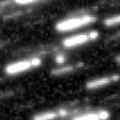
|
Now it is 16.7 mag (June 4, T. Ikemura, H. Sato). It was observed at 17 mag in 2016. In 2017, it will be observable at 15.5 mag in good condition from summer to autumn.
Date(TT) R.A. (2000) Decl. Delta r Elong. m1 Best Time(A, h)
June 24 1 6.89 7 20.3 2.920 2.819 74 16.2 5:37 (208, 43)
July 1 1 13.93 8 27.9 2.835 2.821 78 16.1 5:38 (201, 44)
|

|
Now it is 16.2 mag (June 9, Kunihiro Shima). It stays 16 mag from 2016 to 2017. In the Northern Hemisphere, it stays observable in good condition for a long time. In the Southern Hemisphere, it will never be observable again.
Date(TT) R.A. (2000) Decl. Delta r Elong. m1 Best Time(A, h)
June 24 18 34.42 65 2.0 6.280 6.387 91 16.3 0:26 (180,-10)
July 1 18 27.59 65 31.4 6.292 6.397 91 16.4 23:47 (180,-11)
|

|
It brightened up to 11 mag from spring to summer in 2016. Now it is 16.3 mag (June 1, Alexander Baransky). It stays observable for a long time after this, but it will be fainter than 18 mag in October.
Date(TT) R.A. (2000) Decl. Delta r Elong. m1 Best Time(A, h)
June 24 20 21.31 -17 43.9 2.299 3.213 148 16.3 2:14 (180, 73)
July 1 20 15.94 -18 4.8 2.290 3.250 156 16.4 1:41 (180, 73)
|

|
Now it is 17.0 mag (May 29, iTelescope Observatory, Siding Spring). It will brighten up to 14.5 mag in winter. In the Southern Hemisphere, it stays observable in excellent condition until spring in 2018. In the Northern Hemisphere, it stays unobservable until 2018.
Date(TT) R.A. (2000) Decl. Delta r Elong. m1 Best Time(A, h)
June 24 23 56.38 -63 37.1 2.470 3.008 112 16.7 5:37 (358, 61)
July 1 0 14.46 -65 32.9 2.395 2.952 113 16.6 5:38 ( 0, 60)
|

|
Now it is 15.8 mag (June 14, Kunihiro Shima). It will fade out after this, and it will be fainter than 18 mag in August.
Date(TT) R.A. (2000) Decl. Delta r Elong. m1 Best Time(A, h)
June 24 18 3.63 26 20.3 2.989 3.727 130 16.8 23:52 (180, 29)
July 1 17 59.17 26 58.0 3.037 3.760 128 16.9 23:20 (180, 28)
|
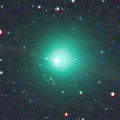
|
Now it is fading rapidly. It has already faded down to 16.9 mag (June 2, T. Ikemura, H. Sato). In the Southern Hemisphere, it stays observable in good condition after this while the comet will be fading. It locates low in the Northern Hemisphere.
Date(TT) R.A. (2000) Decl. Delta r Elong. m1 Best Time(A, h)
June 24 22 29.72 -20 17.8 1.139 1.871 120 16.9 4:22 (180, 75)
July 1 22 17.88 -21 24.2 1.135 1.949 129 17.0 3:43 (180, 76)
|
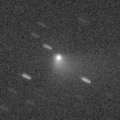
|
Small outburst occured in mid March, and it brightened up to 12.3 mag (Mar. 15, Juan Jose Gonzalez). Now it is fading. It has already faded down to 17.0 mag (May 29, Hiroshi Abe). It is still bright visually as 13.9 mag (May 27, Jakub Cerny). It is observable in excellent condition in the Northern Hemisphere. It stays low in the Southern Hemisphere.
Date(TT) R.A. (2000) Decl. Delta r Elong. m1 Best Time(A, h)
June 24 12 1.89 16 5.6 2.830 2.866 81 16.9 18:27 (169, 38)
July 1 12 8.65 14 34.1 2.941 2.894 77 17.1 18:29 (162, 39)
|

|
Now it is 19.1 mag (June 22, Erwin Schwab, Pablo Ruiz). Return of a new periodic comet which brightened up to 13 mag in 2004. It will be observable in excellent condition in autumn. It is expected to brighten up to 14 mag, if the comet is as bright as when it was discovered.
Date(TT) R.A. (2000) Decl. Delta r Elong. m1 Best Time(A, h)
June 24 0 39.77 -8 56.9 1.765 1.989 86 17.4 5:37 (208, 61)
July 1 0 52.87 -7 53.4 1.673 1.959 90 17.1 5:38 (200, 61)
|

|
It stayed bright 12 mag for a long time from autum in 2015 to summer in 2016. Now it is fading. It has already faded dwon to 16.8 mag (June 14, Kunihiro Shima).
Date(TT) R.A. (2000) Decl. Delta r Elong. m1 Best Time(A, h)
June 24 16 12.65 -14 19.6 4.368 5.278 150 17.3 22:01 (180, 69)
July 1 16 7.49 -14 52.8 4.481 5.330 143 17.4 21:29 (180, 70)
|

|
Now it is 16.0 mag (May 23, iTelescope Observatory, Siding Spring). It is observable in good condition in the Southern Hemisphere. But it will be fainter than 18 mag in August. It is not observable in the Northern Hemisphere.
Date(TT) R.A. (2000) Decl. Delta r Elong. m1 Best Time(A, h)
June 24 9 47.05 -60 24.7 2.292 2.580 94 17.4 18:27 ( 34, 53)
July 1 10 18.28 -57 52.9 2.347 2.604 92 17.5 18:29 ( 37, 54)
|

|
Now it is 17.2 mag (June 5, ATLAS-MLO, Mauna Loa). It is observable in good condition in the Southern Hemisphere. It stays extremely low in the Northern Hemisphere.
Date(TT) R.A. (2000) Decl. Delta r Elong. m1 Best Time(A, h)
June 24 12 41.07 -31 1.9 5.524 5.917 107 17.4 18:31 (180, 86)
July 1 12 43.11 -29 59.8 5.623 5.919 102 17.5 18:29 (133, 83)
|

|
Now it is 17.1 mag (May 29, T. Ikemura, H. Sato). It will be fading and getting lower in the evening sky after this.
Date(TT) R.A. (2000) Decl. Delta r Elong. m1 Best Time(A, h)
June 24 11 50.41 -9 43.0 4.900 4.991 89 17.4 18:27 (154, 63)
July 1 11 50.58 -8 41.9 5.030 4.996 82 17.5 18:29 (142, 58)
|

|
Now it is 17.4 mag (June 16, Kunihiro Shima). It stays 15 mag from 2018 to 2019, and it will be observable for a long time in the Southern Hemisphere. In the Northern Hemisphere, it will be too low to observe soon, then it will never be observable again. It will be unobservable temporarily from September to October also in the Southern Hemisphere.
Date(TT) R.A. (2000) Decl. Delta r Elong. m1 Best Time(A, h)
June 24 11 56.51 -26 26.6 6.039 6.249 97 17.6 18:27 (131, 78)
July 1 11 57.14 -26 27.9 6.101 6.208 91 17.6 18:29 (115, 73)
|
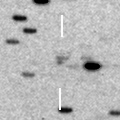
|
Now it is 17.9 mag (May 27, T. Ikemura, H. Sato). It will be brightening slowly until autumn when it becomes 16.5-17 mag. It will be getting lower gradually in the Northern Hemisphere.
Date(TT) R.A. (2000) Decl. Delta r Elong. m1 Best Time(A, h)
June 24 14 12.25 -10 55.2 1.800 2.494 122 17.7 20:01 (180, 66)
July 1 14 12.32 -11 16.8 1.844 2.460 115 17.7 19:34 (180, 66)
|

|
Now it is 17.2 mag (June 26, D. Briggs). It is expected to brighten up to 13-14 mag from 2018 to 2019. In the Northern Hemisphere, it stays observable in good condition for a long time. In the Southern Hemisphere, it is not observable until summer in 2018.
Date(TT) R.A. (2000) Decl. Delta r Elong. m1 Best Time(A, h)
June 24 21 37.38 69 10.9 6.126 6.038 80 17.7 3:29 (180,-14)
July 1 21 24.19 69 50.3 6.037 5.991 82 17.7 2:48 (180,-15)
|

|
It brightened up to 6.2 mag in June in 2016 (June 24, Marco Goiato). Now it is 16.8 mag (June 16, Kunihiro Shima). In the Southern Hemisphee, it stays observable in excellent condition after this. It stays low in the Northern Hemisphere.
Date(TT) R.A. (2000) Decl. Delta r Elong. m1 Best Time(A, h)
June 24 12 25.31 -21 32.7 4.963 5.262 101 17.7 18:27 (168, 76)
July 1 12 24.27 -20 56.5 5.145 5.326 94 17.8 18:29 (143, 73)
|
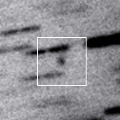
|
It stays observable at 18 mag from spring to summer. It is observable in excellent condition in the Southern Hemisphere. In the Northern Hemisphere, it stays low for a while.
Date(TT) R.A. (2000) Decl. Delta r Elong. m1 Best Time(A, h)
June 24 22 32.04 -33 57.6 4.807 5.423 122 17.8 4:24 (180, 89)
July 1 22 31.02 -34 2.0 4.750 5.444 128 17.7 3:55 (180, 89)
|
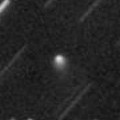
|
It has been 17 mag from 2016 to 2017. It stays bright even after the perihelion passage. It is bright as 17.9 mag still now (June 9, Kunihiro Shima). It is observable in excellent condition in the Northern Hemisphere. It locates somewhat low in the Southern Hemisphere.
Date(TT) R.A. (2000) Decl. Delta r Elong. m1 Best Time(A, h)
June 24 15 4.76 31 21.1 7.592 7.988 109 17.8 20:53 (180, 24)
July 1 15 2.53 31 19.9 7.700 8.019 104 17.9 20:24 (180, 24)
|

|
Now it is 18.4 mag (May 26, iTelescope Observatory, Siding Spring). It brightens up to 16.5-17 mag in August, and it will be observable in good condition.
Date(TT) R.A. (2000) Decl. Delta r Elong. m1 Best Time(A, h)
June 24 14 31.76 -40 49.4 0.400 1.315 131 18.1 20:22 ( 0, 84)
July 1 14 44.69 -35 24.1 0.380 1.286 128 17.8 20:07 ( 0, 90)
|

|
It will brighten up to 14 mag from autumn to winter in 2018, and it will be observable in excellent condition in the Northern Hemisphere. In 2017, it is observable at 17 mag in excellent condition in the Southern Hemisphere.
Date(TT) R.A. (2000) Decl. Delta r Elong. m1 Best Time(A, h)
June 24 0 24.28 -39 57.2 4.168 4.496 102 17.9 5:37 (305, 81)
July 1 0 26.48 -40 25.1 4.049 4.456 107 17.8 5:38 (336, 84)
|
|
![]()
 217P/LINEAR
217P/LINEAR 41P/Tuttle-Giacobini-Kresak
41P/Tuttle-Giacobini-Kresak 29P/Schwassmann-Wachmann 1
29P/Schwassmann-Wachmann 1 C/2015 VL62 ( Lemmon-Yeung-PanSTARRS )
C/2015 VL62 ( Lemmon-Yeung-PanSTARRS ) C/2016 R2 ( PanSTARRS )
C/2016 R2 ( PanSTARRS ) 65P/Gunn
65P/Gunn C/2016 N4 ( MASTER )
C/2016 N4 ( MASTER ) C/2015 O1 ( PanSTARRS )
C/2015 O1 ( PanSTARRS ) C/2017 E1 ( Borisov )
C/2017 E1 ( Borisov ) C/2016 M1 ( PanSTARRS )
C/2016 M1 ( PanSTARRS ) C/2011 KP36 ( Spacewatch )
C/2011 KP36 ( Spacewatch ) C/2017 D2 ( Barros )
C/2017 D2 ( Barros ) C/2016 N6 ( PanSTARRS )
C/2016 N6 ( PanSTARRS ) 213P/Van Ness
213P/Van Ness 352P/2017 L1 ( Skiff )
352P/2017 L1 ( Skiff ) 73P/Schwassmann-Wachmann 3
73P/Schwassmann-Wachmann 3 C/2015 V1 ( PanSTARRS )
C/2015 V1 ( PanSTARRS ) C/2017 K4 ( ATLAS )
C/2017 K4 ( ATLAS ) 47P/Ashbrook-Jackson
47P/Ashbrook-Jackson C/2014 OE4 ( PanSTARRS )
C/2014 OE4 ( PanSTARRS ) 81P/Wild 2
81P/Wild 2 C/2017 K6 ( Jacques )
C/2017 K6 ( Jacques ) C/2016 B1 ( NEOWISE )
C/2016 B1 ( NEOWISE ) 2P/Encke
2P/Encke 315P/2013 V6 ( LONEOS )
315P/2013 V6 ( LONEOS ) P/2017 M2 ( LINEAR-NEAT )
P/2017 M2 ( LINEAR-NEAT ) C/2014 W2 ( PanSTARRS )
C/2014 W2 ( PanSTARRS ) P/2016 S1 ( PanSTARRS )
P/2016 S1 ( PanSTARRS ) C/2017 E3 ( PanSTARRS )
C/2017 E3 ( PanSTARRS ) C/2017 D3 ( ATLAS )
C/2017 D3 ( ATLAS ) C/2017 B3 ( LINEAR )
C/2017 B3 ( LINEAR ) 130P/McNaught-Hughes
130P/McNaught-Hughes C/2017 M4 ( ATLAS )
C/2017 M4 ( ATLAS ) C/2013 X1 ( PanSTARRS )
C/2013 X1 ( PanSTARRS ) C/2015 H2 ( PanSTARRS )
C/2015 H2 ( PanSTARRS ) C/2015 LC2 ( PanSTARRS )
C/2015 LC2 ( PanSTARRS ) 189P/NEAT
189P/NEAT (944) Hidalgo
(944) Hidalgo![]()

































